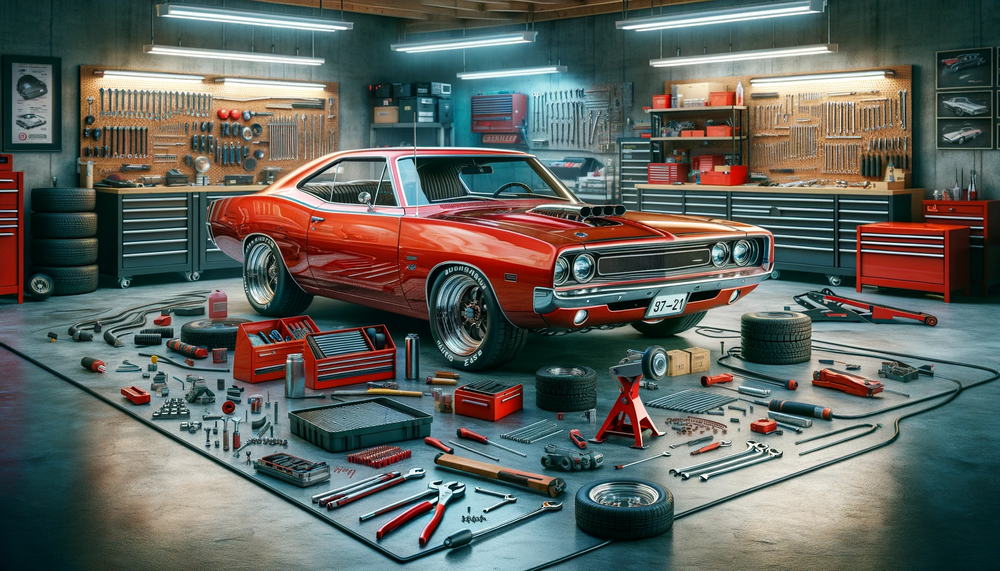Boating enthusiasts understand the unique joy and freedom that open waters can provide. Gliding across lakes, rivers, or oceans, the connection with nature and the sense of exploration make for an unforgettable experience. However, excessive noise from engines, vibrations, and water turbulence can impact the overall enjoyment of your time on board. As the peaceful ambiance of your vessel is a crucial element of a successful boating expedition, it's essential to understand the value of marine sound deadening and its transformative capabilities.
In this informative guide, we will navigate the intricacies of sound deadening in the marine environment, discussing why it's a valuable practice for boat owners and offering expert tips on selecting materials and employing techniques to optimize the acoustic comfort of your watercraft. Our aim is to provide you with the tools and insights needed to upgrade your boat's interior ambiance, ensuring a serene floating haven for you and your fellow travelers to enjoy.
Reasons to Invest in Marine Sound Deadening
Investing in marine sound deadening provides boat owners with numerous benefits, ensuring an enjoyable time on the water:
- A Peaceful Onboard Environment: Sound deadening reduces engine noise, vibrations, and water turbulence, creating a serene atmosphere for relaxation and socializing.
- Enhanced Communication: Reduced noise levels allow for easier communication among passengers and crew, fostering a more enjoyable boating experience.
- Protection of Equipment: Sound deadening can help minimize vibrations that could potentially damage sensitive onboard electronics and equipment.
- Improved Energy Efficiency: Some sound deadening materials also provide thermal insulation, maintaining a comfortable onboard temperature and potentially reducing energy consumption from heating or cooling systems.
Identifying Main Noise Sources on Boats
Before tackling sound deadening in a marine setting, identify the main sources of noise on your boat:
- Engine and Generator Noise: Engines and generators produce significant noise, which can infiltrate the interior of the boat, causing discomfort for the passengers.
- Water Turbulence: Turbulence created by the hull moving through the water generates noise that can be transferred through the boat's structure.
- Vibrations: Various components within the boat, such as motors, pumps, and moving parts, can cause vibrations that contribute to increased noise levels.
- Wind and Environmental Noise: Wind blowing over the boat and noise from the surrounding environment can affect the onboard ambiance.
Selecting the Right Sound Deadening Materials for Boats
Choose the most effective sound deadening materials to suit your boat's specific needs and construction:
- Marine-Grade Mass Loaded Vinyl (MLV): MLV is a high-density material that effectively blocks sound and vibrations. Choose marine-grade MLV for added resistance to mildew, mold, and moisture.
- Closed Cell Foam: Closed cell foam is lightweight and versatile, providing excellent sound absorption in boat interiors, particularly for irregular or curved surfaces.
- Soundproofing Barriers: Designed to block and dampen noise, these barriers can be installed beneath flooring or in walls to mitigate noise transfer.
- Vibration Dampening Mats: These flexible, adhesive-backed mats can be placed on various surfaces throughout the boat to absorb vibrations and reduce overall noise levels.
Best Practices for Sound Deadening Your Boat
Follow these best practices to effectively soundproof your boat for a more enjoyable voyage:
- Assess Your Boat's Acoustics: Begin by assessing where you experience the most noise within your boat and take note of any specific areas that might require attention.
- Clean and Prepare Surfaces: Before applying sound deadening materials, ensure your boat's surfaces are clean, dry, and free of debris so that the materials adhere properly.
- Focus on High-Impact Areas: Target key noise sources, such as engine compartments, generator enclosures, and bulkheads separating the living and mechanical spaces.
- Layer Materials: Maximize the effectiveness of your sound deadening efforts by using multiple layers and types of materials, such as MLV combined with closed cell foam.
- Monitor Results and Adjust: Test the results of your sound deadening efforts by operating your boat in various conditions. If necessary, make adjustments to optimize the overall acoustic comfort.
Conclusion
Boating offers an exceptional connection to nature and a wonderful sense of freedom. However, excessive noise can detract from the enjoyment and tranquility that boaters seek on the water. By understanding and addressing the sources of noise on your boat and utilizing the proper sound deadening materials and techniques, you can significantly improve the acoustic comfort of your vessel, taking your boating experience to unparalleled heights.
As experts in auto sound deadening, we understand the unique challenges of marine applications and are eager to help you create an on-the-water sanctuary in your boat. By employing our knowledge and experience, we will guide you through the process of optimizing your boat's acoustic environment, ensuring a serene and enjoyable atmosphere during your waterborne adventures. Contact B-Quiet today, and let us assist you in elevating your boating experience to new levels of relaxation and satisfaction.











